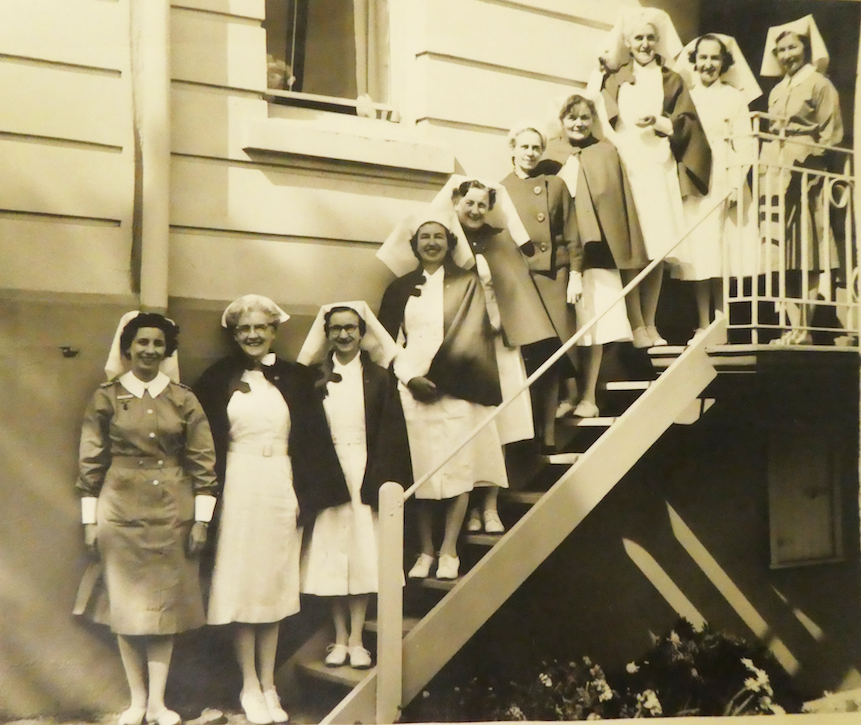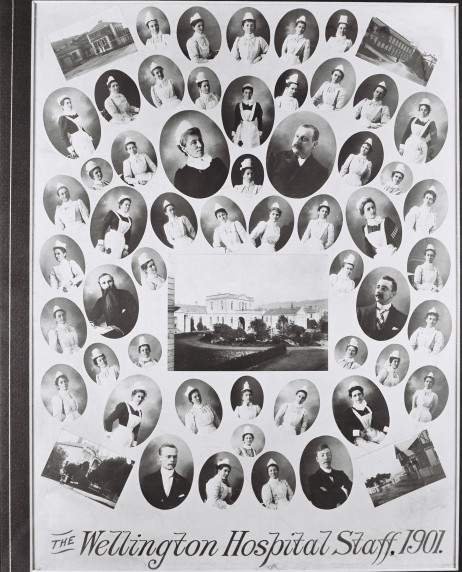
From Lady Superintendent to Matron
Find out about the matrons of Wellington Hospital in times gone by.

This article is part of a significant collection of historic digital content about Wellington Regional Hospital, providing insights into our history of health.
1880 - 1920
The job title 'Lady Superintendent' was used for a short time - 1880 – 1885. Thereafter the title 'Matron' was preferred.
During this early period the holders of these positions had no special training in hospital management but were appointed simply on the basis that they were considered able to do the job.
Frances Keith Payne held the position for a total of sixteen years, bringing stability to the hospital nursing workforce and gaining a reputation of one who ensured a high standard of practice was observed.
Challenges during this period included a significant number of the nursing staff being away on active WW1 service, and an ever increasing shortage of beds.
1921 - 1960
During this period a number of successive Matrons acquired Diplomas of Nursing which were designed to better equip the holders for positions of responsibility.
Staff numbers increased fairly rapidly as can be seen in the below photograph from the 1930s.
From 1944 after the opening of Hutt Hospital, the position of Matron-in-Chief was created. This title indicated over-arching responsibility for the Wellington Hospital Board's institutions, and generally there were simultaneously employed Matrons of each of these institutions, in some instances having the title of Principal Nurse.
1961 - 1988
There were big challenges for nursing administrators during this period, especially between 1971 - 1988 when a major reform of nursing education evolved. The period saw a progressive transition from hospital-based training to polytech and university-based training of nurses. Thus the old probationer system which had served the hospital well in terms of staffing was abolished.

1989 -
The Health Reforms of the 1980s and 1990s saw the implementation of a new system of public hospital management in which the positions of Matrons-in-Chief and Superintendents-in-Chief were abolished. Now a single CEO managed each hospital.
Sheila Mahony had occupied the position of Nurse Manager until she retired in 1995. There followed a period of two years where the nursing staff had no head, putting considerable pressure on the Nursing Supervisors.
With the arrival of Dr Leo Mercer as CEO in 1997 a significant change occurred. A Directorate of Nursing and Midwifery was established. Anita Bamford-Wade was appointed the first Director of Nursing and Midwifery, reporting directly to the CEO. On arrival she found that nursing administration in disarray with a high casualisation of the nursing workforce and a large number of vacancies.
Across the organisation Nursing and Midwifery adopted a Shared Governance model which consisted of five teams: Leadership, Quality, the Career Pathway, Professional Development & Research and Practice.
Anita and the Team Leaders made up the Nursing and Midwifery Leadership for the organisation and together they worked hard to change the existing culture.
A New Graduate Program for new graduates to support them over their first year of practice was established. This was very successful and was eventually adopted as a national initiative for retaining and supporting the new graduates. Postgraduate education was encouraged and CCDHB was the first in New Zealand to have a professorial appointment in Nursing and Midwifery with Maralyn Fourer being a joint appointment with Victoria University.
This article is part of a significant collection of historic digital content about Wellington Regional Hospital, providing insights into our history of health. It was gathered by Ron Easthope, honorary archivist and retired cardiologist at Wellington Hospital.
Discover more:
Read the introduction about this archival content featuring Wellington Hospital’s history.
Find out more about accommodation for student nurses at Wellington Hospital in times gone by.
Read about historical nursing teaching facilities at Wellington Hospital.
Discover more about student nurses at Wellington Hospital in decades gone by, including a history of ‘wastage’.
Read a selection of historical nurse recollections from Wellington Hospital.
Discover the history of Thorndon Hospitals and the first colonial hospital.
Explore the history of the first Newtown Hospital.
View the early expansion of Wellington Hospital.
Discover Wellington Hospital’s services for sick children 1886 – 1912 (Part 1): before the building of a children's hospital.
Read about Wellington Hospital’s services for sick children 1912 – 1988 (Part 2): the first children's hospital - the King Edward V11 Memorial Hospital for Children.
Find out about the history of specialist dental services during the early years of Wellington Hospital.



